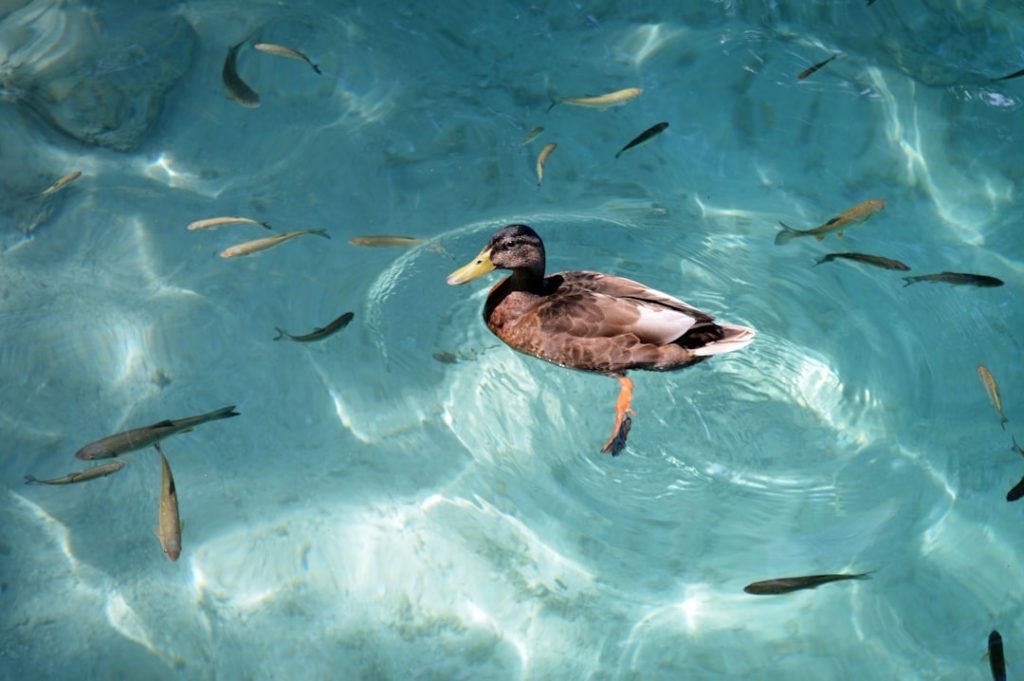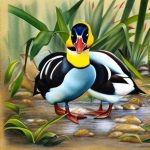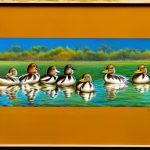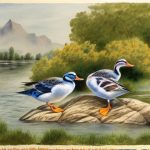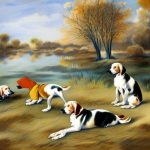Non-flying duck breeds are a unique and fascinating group of waterfowl that have evolved to be flightless. Unlike their flying counterparts, these ducks have adapted to a life on the ground and in the water, using their strong legs and webbed feet for propulsion. Non-flying duck breeds can be found in various parts of the world, and they come in a wide range of sizes, colors, and temperaments. These ducks are popular among hobbyists and farmers for their friendly nature, egg production, and pest control abilities. In this article, we will explore the physical characteristics, behavior, popular breeds, care and housing, breeding and reproduction, as well as conservation efforts for non-flying duck breeds.
Table of Contents
- 1 Physical Characteristics of Non-flying Duck Breeds
- 2 Behavior and Adaptations of Non-flying Duck Breeds
- 3 Popular Non-flying Duck Breeds
- 4 Care and Housing of Non-flying Duck Breeds
- 5 Breeding and Reproduction of Non-flying Duck Breeds
- 6 Conservation and Preservation Efforts for Non-flying Duck Breeds
- 7 FAQs
Key Takeaways
- Non-flying duck breeds are domesticated ducks that have lost the ability to fly over time.
- They are characterized by their heavy body, short wings, and large size, making them unable to take flight.
- Non-flying duck breeds are known for their calm and friendly nature, making them suitable for backyard or farm settings.
- Some popular non-flying duck breeds include the Pekin, Muscovy, and Indian Runner ducks.
- Proper care and housing, including access to water for swimming and foraging, are essential for the well-being of non-flying duck breeds.
Physical Characteristics of Non-flying Duck Breeds
Non-flying duck breeds are known for their distinctive physical features that set them apart from their flying counterparts. These ducks typically have a heavier body and shorter wings, which make them incapable of sustained flight. Their legs are strong and well-developed, allowing them to move swiftly on land and swim gracefully in the water. Non-flying duck breeds also have a wide, flat bill that is adapted for foraging in mud and water for food. Their plumage comes in a variety of colors and patterns, ranging from solid white to mottled brown and black. Some non-flying duck breeds also have unique crests or tufts on their heads, adding to their charm and appeal. Overall, these ducks are well-suited for a life on the ground and in the water, with adaptations that make them efficient foragers and swimmers.
Non-flying duck breeds are also known for their diverse sizes, with some breeds being small and compact while others are large and robust. For example, the Indian Runner duck is a slender and upright breed that stands tall with a distinctive posture, while the Muscovy duck is a larger breed with a heavy body and prominent red facial caruncles. These variations in size and build make non-flying duck breeds suitable for different purposes, whether it’s for egg production, meat, or ornamental purposes. Overall, the physical characteristics of non-flying duck breeds make them an interesting and diverse group of waterfowl that are well-adapted to their environment.
Behavior and Adaptations of Non-flying Duck Breeds
Non-flying duck breeds exhibit a range of behaviors and adaptations that make them well-suited for a life without flight. These ducks are known for their strong social bonds and friendly nature, often forming close-knit groups within a flock. They are also excellent foragers, using their wide bills to sift through mud and water for insects, plants, and small invertebrates. Non-flying duck breeds are also skilled swimmers, using their webbed feet to paddle through the water with ease. Their adaptability to different environments makes them popular among hobbyists and farmers alike.
In addition to their social and foraging behaviors, non-flying duck breeds also exhibit unique reproductive adaptations. Unlike flying ducks that build nests in elevated areas, non-flying duck breeds prefer to nest on the ground or in low-lying areas near water. This behavior is a result of their inability to fly and their reliance on water for protection and food. Non-flying duck breeds are also known for their broodiness, with females often exhibiting strong maternal instincts and protective behaviors towards their eggs and young. These adaptations make non-flying duck breeds well-suited for reproduction in their natural environment.
Overall, the behavior and adaptations of non-flying duck breeds make them fascinating and endearing animals that have carved out a niche for themselves in the world of waterfowl.
Popular Non-flying Duck Breeds
There are several popular non-flying duck breeds that are favored by hobbyists and farmers for their unique characteristics and utility. One of the most well-known non-flying duck breeds is the Indian Runner duck, which is prized for its upright posture, prolific egg-laying abilities, and friendly disposition. This breed comes in a variety of colors, including white, fawn, black, and chocolate, making it an attractive addition to any flock. Another popular non-flying duck breed is the Muscovy duck, which is known for its large size, meat production, and distinctive red facial caruncles. Muscovy ducks come in a range of colors and patterns, including solid white, black, blue, and pied, making them a versatile choice for farmers and homesteaders.
Other popular non-flying duck breeds include the Cayuga duck, which is prized for its iridescent green-black plumage and excellent foraging abilities; the Buff Orpington duck, which is known for its calm temperament, large size, and creamy buff-colored plumage; and the Welsh Harlequin duck, which is valued for its prolific egg-laying abilities and striking silver or gold plumage. These popular non-flying duck breeds offer a wide range of options for hobbyists and farmers looking to add diversity to their flocks while reaping the benefits of their unique characteristics.
Care and Housing of Non-flying Duck Breeds
Non-flying duck breeds require specific care and housing to ensure their health and well-being. These ducks thrive in environments with access to water for swimming and foraging, so it’s important to provide them with a suitable pond or water source. Additionally, non-flying duck breeds need ample space to roam and explore, as they are active foragers that enjoy searching for insects, plants, and small invertebrates. Providing a spacious outdoor area with access to fresh grass and vegetation is essential for keeping non-flying duck breeds happy and healthy.
When it comes to housing non-flying duck breeds, it’s important to provide them with shelter that protects them from predators and inclement weather. A sturdy coop or shelter with ample bedding material will keep these ducks safe and comfortable during the night or during extreme weather conditions. It’s also important to provide nesting boxes or areas where females can lay their eggs in peace. Additionally, non-flying duck breeds should have access to clean water for drinking and bathing at all times.
In terms of diet, non-flying duck breeds require a balanced diet that includes commercial waterfowl feed as well as access to fresh greens, vegetables, and occasional treats such as mealworms or cracked corn. Providing a varied diet will ensure that these ducks receive all the nutrients they need to thrive. Overall, providing proper care and housing for non-flying duck breeds is essential for their health and happiness.
Breeding and Reproduction of Non-flying Duck Breeds

Breeding non-flying duck breeds requires careful planning and attention to ensure successful reproduction. Non-flying duck breeds typically reach sexual maturity at around 5-6 months of age, at which point they may begin mating and laying eggs. It’s important to provide suitable nesting areas for females to lay their eggs, as well as protection from predators during the incubation period. Non-flying duck breeds are known for their broodiness, with females often exhibiting strong maternal instincts towards their eggs and young.
Once the eggs hatch, it’s important to provide a safe and warm environment for the ducklings to grow and develop. Brooding boxes or areas with heat lamps can help keep the young ducklings warm during their early days. Additionally, providing access to suitable feed and clean water is essential for the healthy growth of the ducklings. Non-flying duck breeds are generally good mothers, but it’s important to monitor the health and development of the young ducks closely to ensure their well-being.
Overall, breeding non-flying duck breeds can be a rewarding experience that allows for the continuation of these unique and fascinating waterfowl.
Conservation and Preservation Efforts for Non-flying Duck Breeds
Conservation efforts are crucial for preserving the genetic diversity and unique characteristics of non-flying duck breeds. Many non-flying duck breeds face threats such as habitat loss, predation, and competition from other species, which can impact their long-term survival. Conservation organizations and breeders play an important role in preserving these breeds through careful breeding programs, genetic diversity management, and education about the value of these ducks.
One way to support conservation efforts for non-flying duck breeds is by promoting responsible breeding practices that prioritize genetic diversity and health. By maintaining diverse breeding populations and avoiding inbreeding, breeders can help ensure the long-term viability of these unique waterfowl. Additionally, conservation organizations work to raise awareness about the importance of preserving non-flying duck breeds through educational programs, outreach efforts, and advocacy.
Another important aspect of conservation efforts for non-flying duck breeds is habitat preservation. Protecting wetlands, ponds, and other natural habitats where these ducks thrive is essential for their survival. By supporting habitat conservation initiatives and advocating for policies that protect these areas from development or degradation, conservationists can help ensure that non-flying duck breeds have suitable environments in which to thrive.
Overall, conservation efforts are essential for preserving the genetic diversity and unique characteristics of non-flying duck breeds for future generations to enjoy. By supporting responsible breeding practices, habitat preservation initiatives, and education about the value of these ducks, we can help ensure that these fascinating waterfowl continue to enrich our lives for years to come.
If you’re interested in learning more about non-flying bird breeds, you might also want to check out this insightful article on how to care for goslings. It provides valuable information on raising and caring for geese, which are another popular non-flying bird breed.
FAQs
What are some duck breeds that can’t fly?
Some duck breeds that are known for their inability to fly include the Indian Runner, the Khaki Campbell, and the Pekin duck.
Why can’t these duck breeds fly?
These duck breeds have been selectively bred for their meat and egg production, resulting in larger body sizes and shorter wings, which makes it difficult for them to take flight.
Are there any advantages to having ducks that can’t fly?
Ducks that can’t fly are often preferred for domestic settings, such as farms or backyard ponds, as they are less likely to wander off or escape.
What are some other characteristics of ducks that can’t fly?
In addition to their inability to fly, these duck breeds are known for their strong foraging abilities, high egg production, and calm temperament, making them popular choices for small-scale poultry farming.
Meet Walter, the feathered-friend fanatic of Florida! Nestled in the sunshine state, Walter struts through life with his feathered companions, clucking his way to happiness. With a coop that’s fancier than a five-star hotel, he’s the Don Juan of the chicken world. When he’s not teaching his hens to do the cha-cha, you’ll find him in a heated debate with his prized rooster, Sir Clucks-a-Lot. Walter’s poultry passion is no yolk; he’s the sunny-side-up guy you never knew you needed in your flock of friends!

